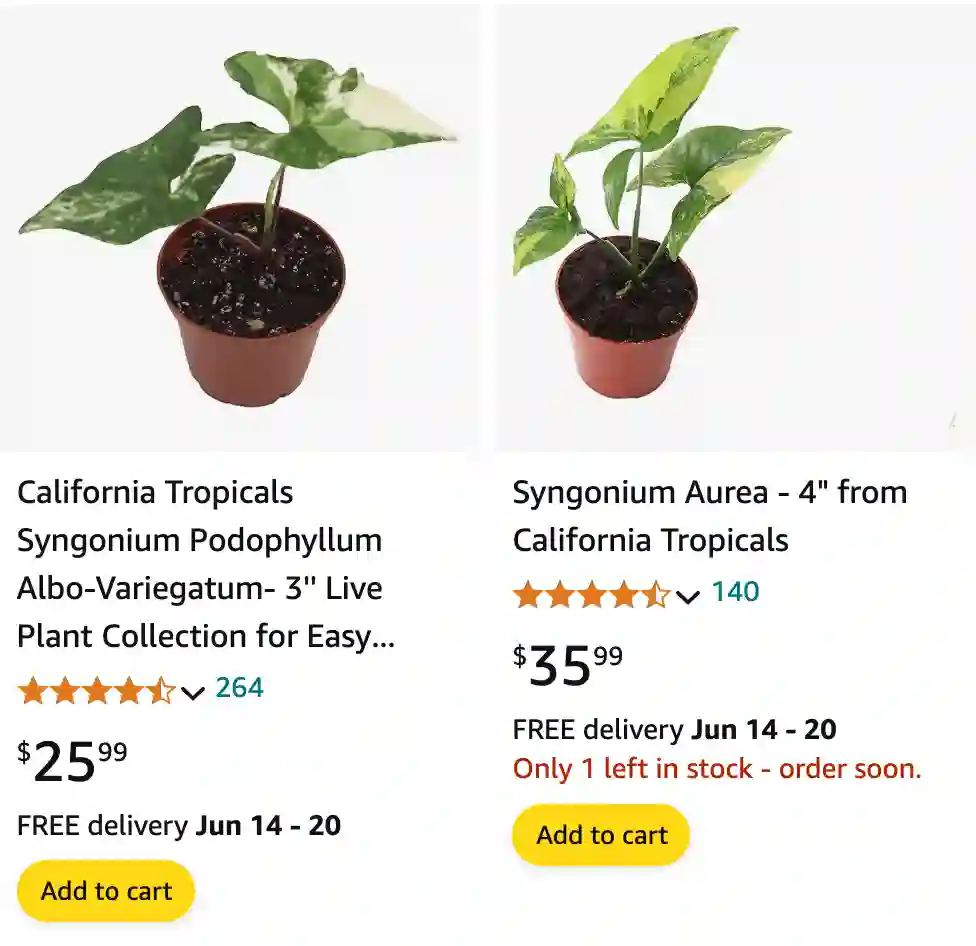
Syngonium Aurea: Your Guide to the Golden Arrowhead Vine
Hi everyone, Ferb Vu here! Today, we’re diving into the world of the Syngonium Aurea, also known as the Golden Arrowhead Vine. This beauty has stolen the hearts of many plant enthusiasts, and for good reason. Its vibrant green leaves splashed with sunshine yellow variegation make it a stunning addition to any indoor space.
But before you rush out and grab one, let’s answer some of the most common questions about this tropical wonder.
What is a Syngonium Aurea?
The Syngonium Aurea is a climbing aroid vine, hailing from the rainforests of Mexico, Central America, and the West Indies. It’s part of the Araceae family, which also includes popular houseplants like philodendrons and monsteras.
This specific variety boasts arrow-shaped leaves in a rich green adorned with eye-catching golden variegation. The amount of yellow can vary from plant to plant, adding to its unique charm. As it matures, the Syngonium Aurea can develop aerial roots, which it uses to climb in its natural habitat.
Syngonium Aurea vs Albo
Both my Syngonium Aurea and Albo are stunning climbers, but in different ways. The Aurea boasts sunshine-y variegation. It’s a constant burst of golden yellow splashed across its emerald green leaves, making it feel cheerful and bright. It’s like having a mini ray of sunshine in my living room, and it goes perfectly with my mid-century modern furniture.
The Albo, on the other hand, is a snowy dream. Its white variegation is like scattered snowflakes on a winter’s night. It adds a touch of elegance and sophistication to my bookshelf. I find myself drawn to its delicate beauty, and it makes a real statement wherever I place it.
Syngonium Aurea vs. Syngonium Podophyllum
Now, you might come across the name Syngonium Podophyllum. This is actually the scientific name for the entire Arrowhead Vine species, with Syngonium Aurea being a specific variety within that group. There are many other Syngonium Podophyllum varieties available, each with its own unique leaf patterns and colors.
Here’s a quick comparison to help you differentiate:
- Syngonium Aurea: Vibrant green leaves with prominent golden variegation.
- Syngonium Podophyllum (regular): Solid green leaves with minimal to no variegation.
- Syngonium Albo Variegata: Green leaves with white variegation.
- Syngonium Pink Splash: Green leaves with splashes of pink variegation.
How to care for Syngonium Aurea?
The good news is, the Syngonium Aurea is known for being a relatively low-maintenance houseplant. Here are some key things to keep in mind:
Light: It prefers bright, indirect light. Avoid harsh, direct sunlight, which can scorch the leaves.
Water: Water deeply when the top inch of soil feels dry. Don’t let the plant sit in soggy soil, as this can lead to root rot.
Soil: A well-draining potting mix is essential. You can use a commercial aroid mix or create your own by combining potting soil, perlite, and orchid bark.
Humidity: Moderate humidity is ideal. If your home is on the dry side, consider using a humidifier or grouping your plants together to increase local humidity.
Fertilizer: During the growing season (spring and summer), you can fertilize your Syngonium Aurea once a month with a balanced liquid fertilizer diluted to half strength.
Pruning: Regular pruning encourages bushier growth and helps maintain a desired shape. Simply snip off leggy stems or unwanted leaves using sterilized pruning shears.
Propagating Your Syngonium Aurea
Looking to expand your golden collection? The Syngonium Aurea propagates easily through stem cuttings. Here’s a quick guide:
- Choose a healthy stem with at least two nodes (the bumps where leaves grow).
- Make a clean cut just below a node.
- Remove the lower leaves, leaving a couple of nodes exposed.
- Dip the cut end in rooting hormone (optional) and plant it in a pot with moist, well-draining soil.
- Keep the soil moist and provide warmth (around 70°F) for optimal rooting.
Common Syngonium Aurea Problems
Even the easiest plants can encounter issues. Here are a few common problems to watch out for:
- Brown leaves: This can be caused by underwatering, overwatering, or too much direct sunlight.
- Yellowing leaves: Similar to brown leaves, yellowing can also be due to watering problems or lack of light.
- Leggy growth: This indicates insufficient light. Move your plant to a brighter location.
- Pests: Mealybugs and spider mites can be occasional visitors. Regularly inspect your plant and treat them with insecticidal soap or neem oil if necessary.
Syngonium Aurea: A Touch of Gold for Your Home
The Syngonium Aurea is a stunning and relatively easy-to-care-for vining plant. With its vibrant foliage and manageable needs, it’s a perfect choice for plant enthusiasts of all levels. So, why not add a touch of sunshine to your home and welcome a Syngonium Aurea into your life?




